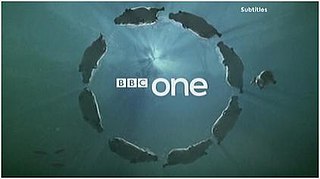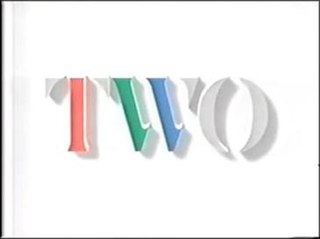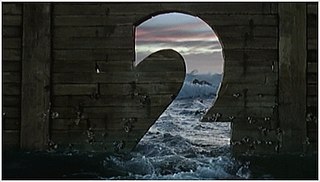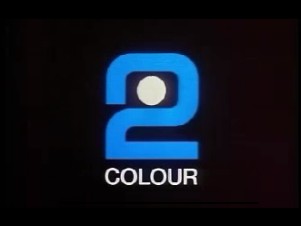| Title | Air dates | Description |
|---|
| Capoiera | 29 March 2002 – 7 October 2006 | Filmed against the London skyline above the now–demolished tower of International Press Centre on Shoe Lane in Holborn, it shows two performers, Mestre Poncianinho and Contra-Mestre Casquinha, doing Capoeira, a Brazilian martial art. The camera circles around them throughout its duration, and they are also dressed in red and white. An alternative edit, which joins the action a few seconds earlier than the standard version, was used in Wales and Scotland. This ident was commonly seen introducing the lunchtime news on weekdays. This was the first ident in the new set to be shown on television at 9am on 29 March 2002. |
| Ballet | 29 March 2002 – 7 October 2006 | Filmed at the Minack Theatre in Cornwall, the ident features 10 ballerinas dressed entirely in red. The camera slowly tracks, showing the Minack stage where the ballerinas perform a graceful dance, with the dramatic Cornish coastline in the background, accompanied by a string quartet playing the jingle with the cello dominant. This sequence was the most sombre of all the idents, and a still of it was used when BBC announced the death of The Queen Mother. For most of its life, this ident was used during times of "reflection" only, namely times of national tragedy and the death of a Royal Family member. It was mainly used to introduce coverage of funerals, such as that Pope John Paul II and George Best. This ident was also the last out of all the Rhythm and Movement idents to be shown on the channel, played in full as part of the final montage. |
| Acrobat | 29 March 2002 – 7 October 2006 | Filmed in the Royal Horticultural Society Halls in Victoria, the ident shows three acrobat performers in white costumes, on red sashes (Aerial Silks) performing acrobatic tricks while suspended from the roof. The accompanying jingle is mid-tempo and performed by a string section, and this ident was also used frequently to introduce the news. This ident was conceived & choreographed by Roger Robinson of Acrobat Productions and the 3 aerial performers were [Jane Osborn] (left), Melissa Merran (centre), and [Michele Laine] (right). |
| Hip-Hop | 29 March 2002 – 7 October 2006 | Sometimes known as Basketball, and filmed at Shepperton Studios, this ident shows three basketball players dancing in their wheelchairs to a hip hop theme. The dancers are all dressed in red, with matching accents on their wheelchairs. The lead dancer is Ade Adepitan, a British paralympic basketball player, and presenter of the CBBC programme Xchange . The dance is made up of different wheelchair-basketball moves used in the game. |
| Festival | 29 March 2002 – 7 October 2006 | Sometimes known as Rave, and filmed at RAF Bovingdon, it begins with a close up of two women dancing together with a "techno"-style version of the BBC One jingle playing in the background, before zooming out to reveal a large crowd of people dancing in the same way, somewhat resembling a rave party. Red takes a prominence in the background. This version of the jingle was sampled in a later dance music track, Forever and a Day by State One in 2003. |
| Salsa | 29 March 2002 – 7 October 2006 | Filmed in Sarratt, Hertfordshire against a decorated red backdrop, the camera first focuses on a couple dancing salsa, and then reveals a large group of dancing couples from a variety of backgrounds doing the same thing. |
| Haka | 29 March 2002 – 3 January 2005 | Filmed in a field of Gilfach Goch in Wales, it first shows a closeup of a Māori native, Jo Hutley, and then pulls back to reveal 14 Welsh amateur rugby players performing Haka, a traditional Māori dance that shows art and movement by using hands, feet, legs, body, voice, tongue and eyes. The players are dressed in red-striped polo shirts. The music is slow and played on strings, accompanying the sound of the rugby players' chant. This ident was eventually withdrawn after licensing issues with the music, and did not appear in the final montage. It was also one of the only two idents to be withdrawn during its run (the other being Tai-Chi (reflection)). The ident was usually used to introduce sports programming, and occasionally to introduce the weekend news bulletins. |
| Tap Dogs | 29 March 2002 – 7 October 2006 | Filmed inside Littlebrook Power Station in Dartford, Kent, this ident shows six members of the dance troupe Tap Dogs performing a tap dance in red T-shirts. The upbeat jingle incorporates the sound of the troupe's tap shoes. |
| Music Video | 4 October 2002 – 7 October 2006 | First broadcast on 4 October 2002, to coincide with the premiere of Fame Academy , the ident was filmed in studio with a red backdrop. It features one lead dancer and six back-up dancers. This ident resembles a music video, hence its name. It was the first ident that was not part of the original set of eight. |
| Bollywood | 8 November 2002 – 7 October 2006 | First broadcast on 8 November 2002, this ident features 9 males and 9 females dancing a traditional Indian dance, much like a Bollywood movie. The females wear red in this ident, while the males wear white. |
| Tango | 2 January 2003 – 7 October 2006 | Also known as Salsa 2. Launched on 2 January 2003, the ident was filmed in Leadenhall Market in the City of London and features three couples dancing the tango, supposedly in the rain. |
| Tai-Chi | 16 June 2003 – 7 October 2006 | First broadcast on 16 June 2003, the ident features seven people dressed in traditional Chinese clothing performing tai chi on a lochside. This ident had two versions: one with the camera drawing back, revealing all the performers and their mirror image on the loch; the other (withdrawn in 2003) starts with the mirror image and spins round to reveal that the viewer is actually looking at the reflection. The tai chi exponents in the ident were mainly students of Edinburgh-based tai chi instructor Ian Cameron, most of whom are teachers in their own right. The particular tai chi form performed was taken from the traditional Wudang system, adapted to suit the demands of the landscape. It was filmed near Loch Rannoch in Scotland. It was used frequently before the news. |
| Skateboarders | 5 September 2003 – 7 October 2006 | Launched on 5 September 2003, the ident features three skateboarders skateboarding through a shipyard. This ident was filmed on location at the Harland and Wolff Shipyard in Belfast, Northern Ireland. The featured skateboarders are, from left to right, British professional skateboarders Olly Todd, Franklin Stephens and Danny Wainwright. Because the accompanying jingle is a mellow interpretation performed on a solo piano, this ident was often used to introduce the news, and when exiting the afternoon CBBC strand. It was also often used in the Midlands and Northern Ireland. On 7 September 2005, BBC Northern Ireland made a slight alteration to the skateboarders ident by turning the "BBC One NI" logo from red to green and introducing a new square in the opposite corner of the screen showing an English flag with the word "Nil" written over it. This was to celebrate Northern Ireland's 1–0 victory over England in a qualifier match for the 2006 FIFA World Cup. The ident was shown again the following Saturday ahead of Football Focus . It was the last ident to be used in Northern Ireland due to the setting of the ident taking place in Belfast. |
| Massai | 5 January 2004 – 7 October 2006 | Launched on 5 January 2004, this ident was filmed on an African savanna in Kenya by the BBC Natural History Unit. It features nine native Maasai tribesmen dancing in the centre. It is the only 'Rhythm & Movement' ident to be filmed outside the UK. The music is a predominantly percussion-based version of the BBC One jingle. |
| Tumbler | 4 January 2005 – 7 October 2006 | Replaced Haka. First broadcast on 4 January 2005, the ident features five people (all with some red on their clothes) breakdancing on a walkway. It had to be relaunched after 24 hours, apparently due to a copyright dispute over the background music. BBC One Scotland continued to use the original version until the rebranding in 2006. The jingle is upbeat and features synthesised brass. It was filmed on location at the now-demolished BBC Birmingham Pebble Mill Studios, and was the final 'Rhythm & Movement' ident to be added to its regular playlist. |













